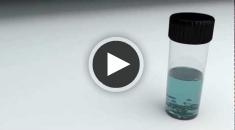Stanford Nitrogen Group
The Stanford Nitrogen Group developed a new wastewater treatment process for the removal and recovery of energy from waste nitrogen (i.e. ammonia). This process improves the efficiency and lowers the cost of nitrogen treatment. The process is termed the Coupled Aerobic-anoxic Nitrous Decomposition Operation (CANDO) and consists of 2 principal steps: biological conversion of ammonia to N2O gas, and combustion of a fuel (i.e. biogas) with N2O to recover energy. It’s the first wastewater treatment process to recover energy from nitrogen.
Wastewater treatment facilities experience dual financial pressures - rising energy costs and meeting increasingly stringent nitrogen discharge regulation. Wastewater treatment imposes a three percent load on U.S. energy supply and is often the highest energy expenditure of municipalities. Discharging ammonia to water bodies causes dead zones, but many wastewater treatment facilities do not have the current capability to economically meet the increasingly stringent standards. As a result, wastewater treatment facilities have a strong interest in energy efficient and low-cost N-treatment processes. CANDO has the potential to meet these needs.
CANDO has been under research and development at Stanford University since 2009 and is currently functional at lab-scale. CANDO will next be tested at the pilot-scale to evaluate full-scale viability. For the treatment of wastewater, CANDO reduces the cost of treating nitrogen by at least 50 percent, improves energy efficiency by recovering energy from waste nitrogen and enabling increased methane recovery from organic matter, decreases the production of biosolids, mitigates the release of the greenhouse gas N2O, and improves water quality.
Innovators
Navillum Nanotechnologies developed a process to fabricate quantum dots and other types of semiconducting nanocrystals. When used in liquid crystal displays (LCD), quantum dots improve energy efficiency by up to 35 percent and in solar panels can increase efficiency up to 45 percent.
Radiator Labs developed a low-cost, easily installed radiator retrofit that converts radiator heating systems into a controlled-zoned system, which significantly increases the efficiency of radiator heating while improving occupant comfort.
NuMat Technologies, Inc is a cleantech spin-out that computationally designs and synthesizes high-performing nanomaterials for gas storage and separation applications. NuMat has developed materials that will fundamentally change the economics of gas storage in natural gas vehicles — supporting the gradual displacement of foreign oil.
Mesdi Systems developed revolutionary equipment for manufacturing lithium-ion batteries, solar cells, and other high precision products that will improve their performance and lifetime with advanced coatings and quality control.
SolidEnergy Systems developed cutting-edge battery technologies to meet the world’s growing energy storage demand. The Polymer Ionic Liquid (PIL) rechargeable lithium battery has four times the energy density of a conventional lithium-ion battery.





